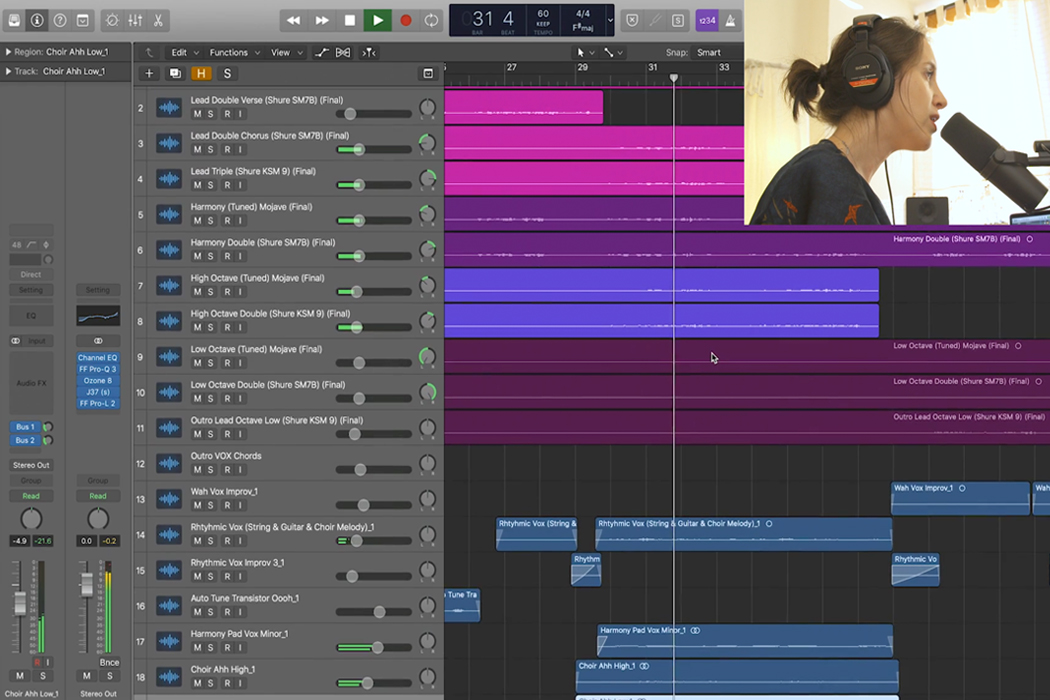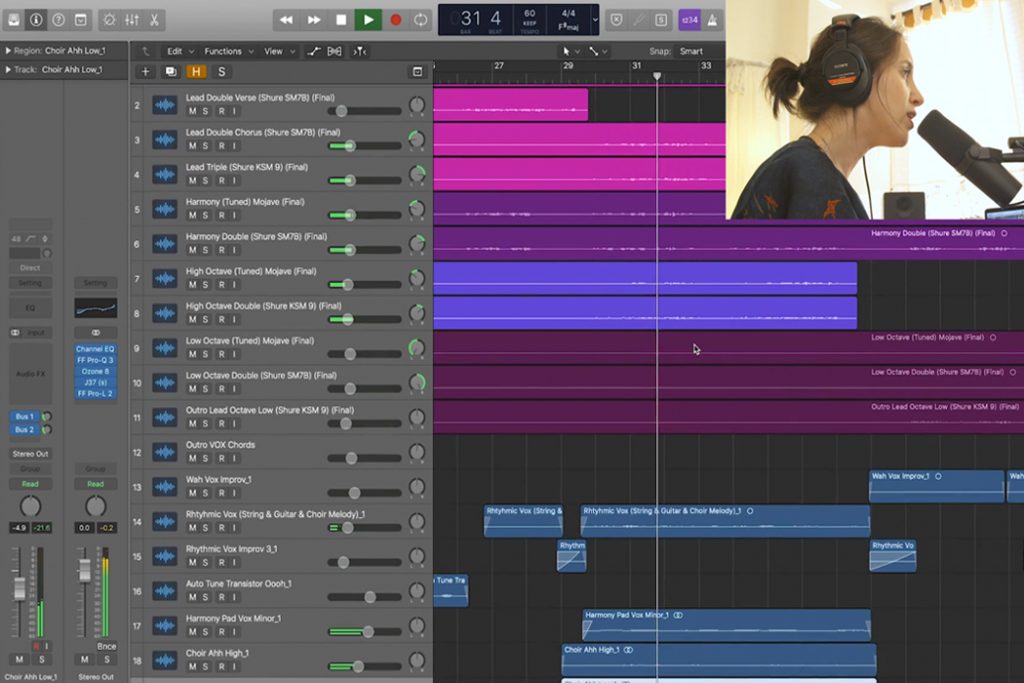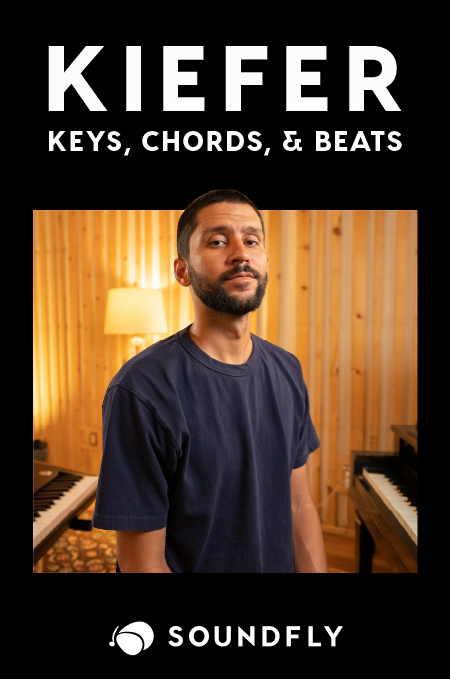
+ Recording and mixing your songs at home? Preview Soundfly’s online course, Modern Pop Vocal Production for free, and subscribe here to get unlimited access.
Don’t have a professional 100-piece choir on hand? Well, I’m sorry to hear that but luckily, we’ve got a way around that: You can have an entire chorus made up of your voice instead!
Before we dive into how to layer your voice in your DAW, let’s talk about who has done this well in the past, and how they’ve achieved such a feat.
But first, for all you singing producers out there, Soundfly just launched a brand new course with Kimbra, in which she herself demystifies her variety of vocal techniques and the creative inspirations behind her most beloved songs. Go check out this in-depth and awe-inspiring new course, Kimbra: Vocal Creativity, Arranging, and Production, exclusively on Soundfly.
What a Choir of Yous Could Sound Like
There are two artists who have turned their voices into an enormous choir through multi-tracking very, very well. One proven genius and one young’un currently taking over the world: Freddie Mercury and Jacob Collier.
Exhibit A: Queen’s “Bohemian Rhapsody”
One of the best examples of a choir of voices is Queen’s “Bohemian Rhapsody.” It was the brainchild of frontman Freddie Mercury. According to The Story Of Bohemian Rhapsody, guitarist Brian May said this “was all in Freddie’s mind” before they started recording the song. And the band typically wrote songs together in the studio.
“It was basically three songs that I wanted to put out and I just put the three together,” Mercury said.
Mercury, May, and drummer Roger Taylor sang their vocal parts for 10-12 hours each day. The whole song took three weeks to record. And some sections had 180 vocal overdubs. When you hear the song, it sounds like a small choir. In reality, it was just three dudes in a studio, with nothing but time.
Exhibit B: Jacob Collier’s “Moon River”
Grammy Award-winning songwriter/producer/composer Jacob Collier covered the classic 1960s track “Moon River.” But he recorded it in his own way — by recording himself singing like 5,000 times. Plus, he added the voices of 144 other singers and musicians, including Chris Martin, Charlie Puth, Herbie Hancock, and Quincy Jones (see the full list of contributors here).
This practice is not new for Collier. He often layers his voice more than most producers would, creating his own little Collier Choir. It helps that he has perfect pitch and can identify if a note is a couple of cents sharp or flat.
I’m not saying you should use 5,000 layers of your voice. But a few extra layers of your voice can create a fuller sound than just one or two.
How to Layer Your Vocals
The idea of throwing a bunch of your vocals together sounds cool, but there is a method to this madness. Here are some practical tips for layering your vocals.
If you want to go deeper on layering or writing background vocals in general, check out Soundfly’s comprehensive course on Modern Pop Vocal Production, which has at least two full sections on the topic.
1. Layer Your Melody
I like to add one or two layers of the melody during the chorus. This means I just record myself singing the chorus melody underneath the main vocals.
You can also do this in the verses. Have two of yourself singing the melody during the verses and three (or more) of you during the chorus. Just make sure you sing it as similar as possible to the main vocal. Otherwise, it could get distracting.
2. Find Harmonies
Some singers and musicians can find multiple harmonies easily. If that’s not you, try to find just one harmony and layer it a couple of times.
Add in those harmonies during the chorus and any other places you’d like to emphasize. The ears perk up when a new voice jumps into the fray, especially when it goes from one voice to two.
3. Sing in Different Octaves
Once you’ve recorded multiple layers of your melody and found harmonies, sing them again but in different octaves.
If you want to widen the sonic range of the voices further than what you can sing, pitch shift them. For pitch shifting, you can copy and paste the recording of your melody or harmony onto a new track. Then pitch it up or down an octave.
4. Pan (for Gold)
Now that you have all the vocal parts, it’s time to balance them all. Panning is one of the most important parts of getting a solid mix and a professional-sounding song.
Don’t be afraid to pan some of these voices as far as 100% left or right. As long as there’s a nice balance of voices between both ears. The general rule is that the higher voices should be panned the furthest either way, but that’s more of a guideline than a rule. Start by keeping the lower voices more toward the middle, panning the voices as they get higher.
Now, all that’s left to do is sing.
Don’t stop here!
Continue learning with hundreds of lessons on songwriting, composing, home recording, electronic production, beat making, and much more. Explore Soundfly’s exciting courses like Modern Pop Vocal Production, Unlocking the Emotional Power of Chords, and Kimbra: Vocal Creativity, Arranging, and Production.




